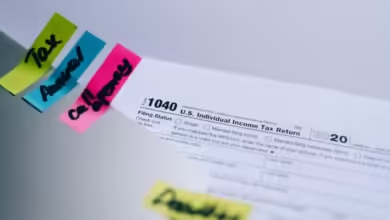Essential Taxes Filing Guide: Key Deadlines, Best Practices, and Where to File for Maximum Efficiency

Table of Contents
Filing your taxes correctly and on time is essential for staying compliant with the law and avoiding penalties. Whether you’re a first-time filer or a seasoned taxpayer, understanding when and where to file your taxes can help you streamline the process and maximize your refund. This comprehensive guide will walk you through the key dates, filing locations, and options available to ensure a smooth tax filing experience.
Key Tax Deadlines to Remember
1. Annual Tax Filing Deadline
The most critical date for taxpayers in the United States is April 15th. This is the standard deadline for filing individual income tax returns. If April 15th falls on a weekend or holiday, the deadline is typically extended to the next business day. Missing this deadline can result in late filing penalties, so it’s crucial to mark this date on your calendar.
2. Quarterly Estimated Tax Payments
If you’re self-employed or have other income that isn’t subject to withholding, you may need to make quarterly estimated tax payments. These payments are due on the following dates:
- April 15th: First quarter payment
- June 15th: Second quarter payment
- September 15th: Third quarter payment
- January 15th (of the following year): Fourth quarter payment
Failing to make these payments can lead to underpayment penalties, so it’s essential to stay on top of these deadlines if they apply to you.
3. Tax Extension Deadlines
If you need more time to file your taxes, you can request an extension by filing Form 4868 with the IRS. This extension gives you until October 15th to file your return. However, it’s important to note that an extension to file is not an extension to pay. You must still pay any estimated taxes owed by April 15th to avoid interest and penalties.
Where to File Your Taxes
1. Filing Online with the IRS
The most popular and efficient way to file your taxes is online through the IRS’s e-file system. This method is fast, secure, and allows you to receive your refund more quickly, especially if you opt for direct deposit. Many tax preparation software options, like TurboTax and H&R Block, integrate with the IRS e-file system, making it easy to complete and submit your tax return from the comfort of your home.
2. Filing by Mail
If you prefer to file a paper return, you can still do so by mailing your completed tax forms to the IRS. The mailing address depends on your location and whether you’re including a payment. The IRS provides a list of addresses on its website. Be sure to send your return via certified mail or another trackable service to ensure it arrives on time.
3. Using a Tax Professional
For individuals with complex tax situations, hiring a tax professional may be the best option. Certified Public Accountants (CPAs) and Enrolled Agents (EAs) can help you navigate the tax code, ensure you take advantage of all available deductions, and file your return accurately. A tax professional can also represent you before the IRS if any issues arise.
4. Free Filing Options
The IRS offers a Free File program for individuals with an adjusted gross income (AGI) of $73,000 or less. Through this program, you can use free, brand-name tax preparation software to file your federal return. Additionally, many states offer free filing options for state tax returns. For those who prefer to do it themselves, Free File Fillable Forms are available for all income levels.
Understanding Your Tax Filing Status
Your tax filing status determines your tax rates and eligibility for certain deductions and credits. It’s crucial to select the correct status when filing your return. The five primary filing statuses are:
- Single: For individuals who are unmarried or legally separated.
- Married Filing Jointly: For married couples who choose to file together.
- Married Filing Separately: For married couples who choose to file separately, which can sometimes reduce liability.
- Head of Household: For unmarried individuals who pay more than half of the household expenses for themselves and a qualifying dependent.
- Qualifying Widow(er) with Dependent Child: For individuals who have lost a spouse and have a dependent child, this status offers the benefits of Married Filing Jointly for up to two years after the spouse’s death.
Choosing the correct filing status is essential for optimizing your tax liability and ensuring you’re eligible for the credits and deductions you deserve.
Maximizing Deductions and Credits
To minimize your tax liability and maximize your refund, it’s essential to take advantage of all available deductions and credits. Some of the most common deductions and credits include:
- Standard Deduction: The flat amount taxpayers can deduct from their income. For 2023, the standard deduction is $12,950 for single filers, $25,900 for married couples filing jointly, and $19,400 for heads of household.
- Itemized Deductions: If your eligible expenses exceed the standard deduction, you may choose to itemize deductions. This includes expenses like mortgage interest, state and local taxes, charitable contributions, and medical expenses.
- Earned Income Tax Credit (EITC): A refundable credit for low- to moderate-income working individuals and families. The amount depends on your income, filing status, and number of dependents.
- Child Tax Credit: A credit of up to $2,000 per qualifying child under the age of 17. This credit is partially refundable, meaning you can receive a refund even if you don’t owe taxes.
By understanding and applying these deductions and credits, you can lower your taxable income and increase your refund.
Common Tax Filing Mistakes to Avoid
1. Filing with Incorrect Information
Errors in your Social Security number, filing status, or bank account information can delay your refund or result in a rejected return. Double-check all information before submitting your return to avoid these common mistakes.
2. Missing the Deadline
Filing late without an extension can lead to penalties and interest charges. If you can’t meet the April 15th deadline, be sure to file for an extension and pay any estimated taxes owed to avoid additional fees.
3. Overlooking Income Sources
Make sure to report all income, including freelance work, investment earnings, and side gigs. The IRS receives copies of all your income forms (such as W-2s and 1099s), so failing to report this income can trigger an audit.
4. Forgetting to Sign Your Return
If you file a paper return, don’t forget to sign it. An unsigned return is considered invalid, and the IRS will not process it until it’s signed, which could delay your refund.
Conclusion
Filing your taxes doesn’t have to be a stressful experience. By knowing the key dates, understanding where to file, and maximizing deductions and credits, you can ensure a smooth tax season and potentially boost your refund. Whether you choose to file online, by mail, or with the help of a tax professional, staying informed and organized is the key to success.
External Resources:
- For additional tax filing tips, visit the IRS Filing Season Information page.
- For guidance on choosing the right tax filing status, refer to the IRS Filing Status Guide.





